The Final Investigation
Project Blue Book
The final project headed by the USAF into the UFO phenomenon was Project Blue Book. Preceded by
Project Sign
and
Project Grudge,
Blue Book was the most well known of the three investigations into the UFO phenomena. The main objective of Project Blue Book was to determine if UFOs were a potential threat to national security.
Blue Book began in 1952, taking over from
Project Grudge
and was to run until the end of 1969 but remained active until January of the following year.
The first head of Project Blue Book was Captain Edward J. Ruppelt. Over the years Blue Book would also be headed by Captain Hardin, Captain Gregory, Major Friend and finally, Major Hector Quintanilla.
Ruppelt officially coined the term "Unidentified Flying Object", to replace the many terms ("flying saucer" "flying disk" etc…) the military had previously used. Ruppelt thought that "unidentified flying object" was a more neutral and accurate term.
Ruppelt resigned from the air force some years later,
and wrote the book The Report on Unidentified Flying Objects, in which he describes the study of UFOs by the USAF from 1947 to 1955.
After a number of UFO sightings, one by an Air Force pilot over Fort Monmouth, New Jersey, in September 1951, the investigation of UFOs took a new lease of life. During the next 17 years Project Blue Book would investigate thousands of reported sightings.
Ruppelt ordered the development of a standard questionnaire for UFO witnesses to complete, hoping to uncover data which could be subject to statistical analysis. He commissioned the Battelle Memorial Institute to create the questionnaire and computerize the data. Using case reports and the computerized data, Battelle then did a massive scientific and statistical study of all Air Force UFO cases, completed in 1954 and known as
"Project Blue Book Special Report No. 14"
After the mishandling, or should we say lack of enthusiasm for
Project Sign
and
Project Grudge
Ruppelt and his team were authorized to interview any and all military personnel who witnessed UFOs. The project team was not required to follow the “chain of command.” This unprecedented authority underlined the seriousness that was given to Project Blue Book's investigations in the early years.
Astronomer Dr. J. Allen Hynek was the scientific consultant for Project Blue Book, as he had been with
Projects Sign
and
Grudge.
Hynek worked for the project up to its conclusion in 1969. Hynek created the categorization which has been extended and is known today as Close Encounters. He was a skeptic when he started, but said that his feelings changed to “a more wavering skepticism” during the research, after processing a few UFO reports he thought were inexplicable.
In 1952 after hundreds of UFO sightings near the National Airport in Washington, D.C. the C.I.A., (Central Intelligence Agency) established a panel of scientists headed by Dr. H. P. Robertson.
Ruppelt, Hynek, and others presented the best evidence, including movie footage that had been collected by Blue Book. After spending only 12 hours reviewing 6 years of data,
The Robertson Panel
concluded that most UFO reports had “prosaic explanations,” and that all could be explained with further investigation, which they deemed not worth the effort.
(More on the Robertson report.)
Hynek was an associate member of the
Robertson Panel,
which recommended that UFOs needed debunking. A few years later, however, Hynek's opinions about UFOs changed, and he thought they represented an unsolved mystery deserving scientific scrutiny.
A lot of cases over that 17 year period were not investigated fully. Over the years interest in the project declined as did the number of personnel assigned to Project Blue Book. The result was accusations of mishandling of investigations and cover-ups.
After a number of sightings in 1965 renewal of public interest returned, the USAF set up the Ad Hoc Committee to review Project Blue Book towards the end of 1965.
The Committee recommended that research on the problem be strengthened by involving universities. In March 1966, sightings of UFOs in Michigan by more than 100 witnesses, and the failure of Blue Book to come up with a credible explanation, prompted the House Armed Services Committee to hold an open hearing on UFOs, from which came a decision to implement the Ad Hoc Committee's recommendation.
A tender was put out to academic institutions to sift through the Project Blue Book material and come up with some definitive conclusions. The task was awarded to the University of Colorado under the supervision of Edward Condon. In January 1969, the Condon Report appeared and concluded that any further official UFO investigations would be unjustified. As a result, Project Blue Book was canceled.
Many people accepted the conclusions made by Project Blue Book that there was nothing extraordinary about UFOs. However, many also believed, as others do now, that some UFO reports bypassed Blue Book entirely and that the US Government is still gathering information and studying UFO reports. The US Government denies claims of this practice.
Project Blue Book collated some 12,618 reports during its 17 years, 701 of which were classified as unknown. The remaining balance, the majority of reports, were considered to be “misidentifications of natural phenomena” (Clouds, stars, planets etc…) or just conventional aircraft. A few sightings were deemed as being hoaxes.
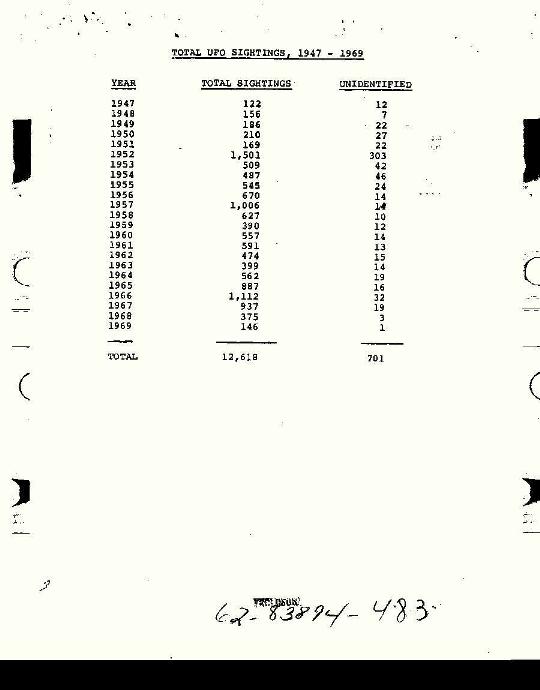
Project Blue Book's Official Conclusions
Project Blue Book stated that UFOs sightings were a result of:
A mild form of mass hysteria.
Individuals who fabricate such reports to perpetrate a hoax or seek publicity.
Psychopathological persons.
Misidentification of various conventional objects.
As of April 2003, the USAF has publicly indicated that there are no immediate plans to re-establish any official government UFO study programs.
These official conclusions were contradicted by the USAF's own commissioned
Project Blue Book Special Report No. 14.
Psychological factors and hoaxes actually constituted less than 10% of all cases. 22% of all sightings remained unsolved even though some of those cases were highly credible.
Under the Freedom of Information Act Projects Blue Book’s reports are available to the general public although names and personal information about witnesses has been blacked out.
Below are documents relating of Project Blue Book, released by the FBI. (Federal Bureau of Investigation)
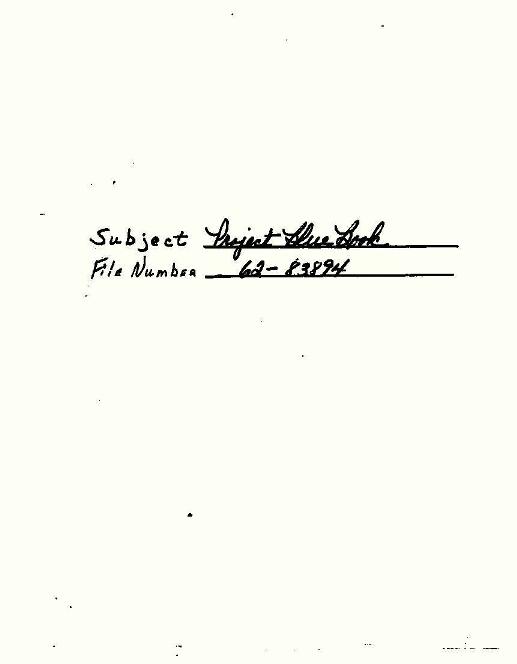
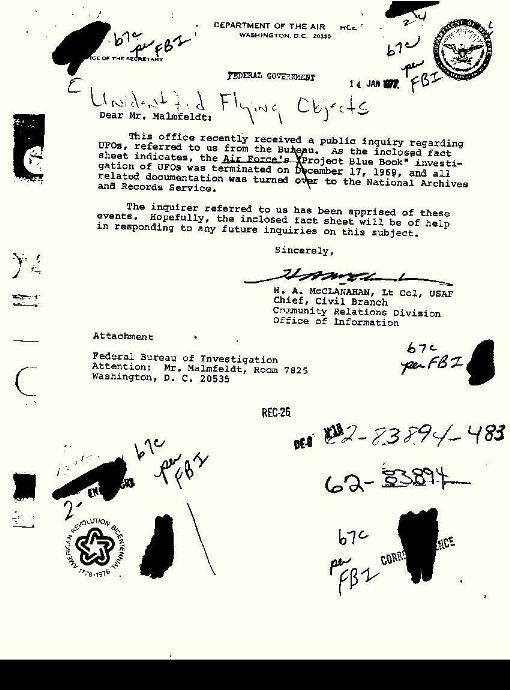
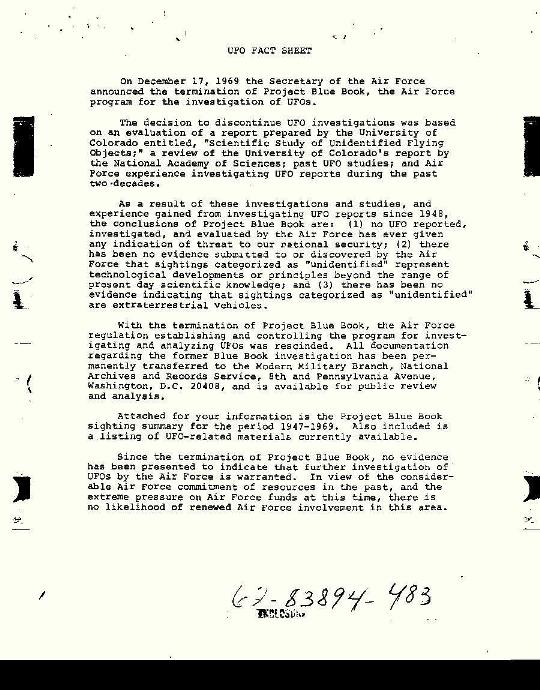
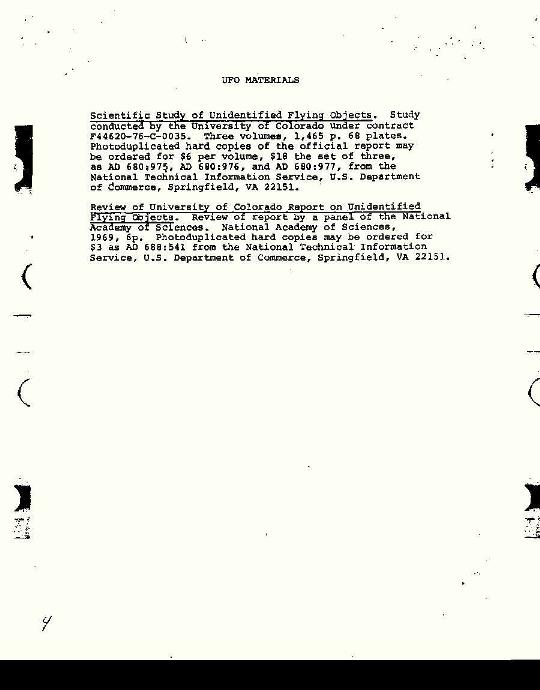
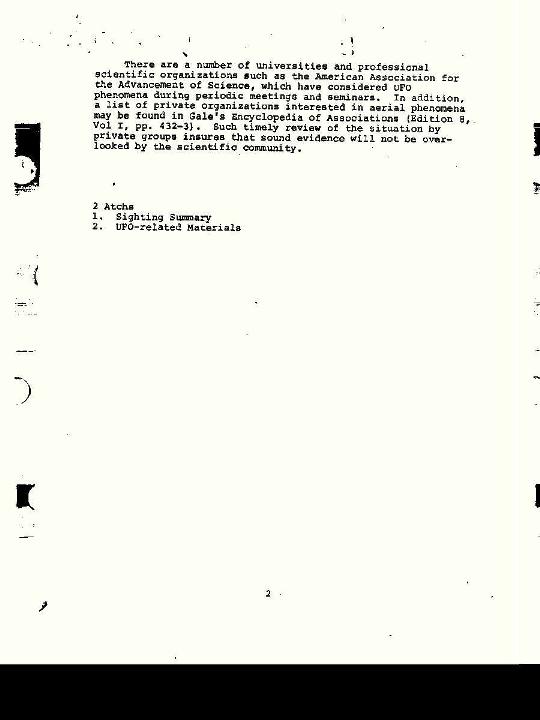
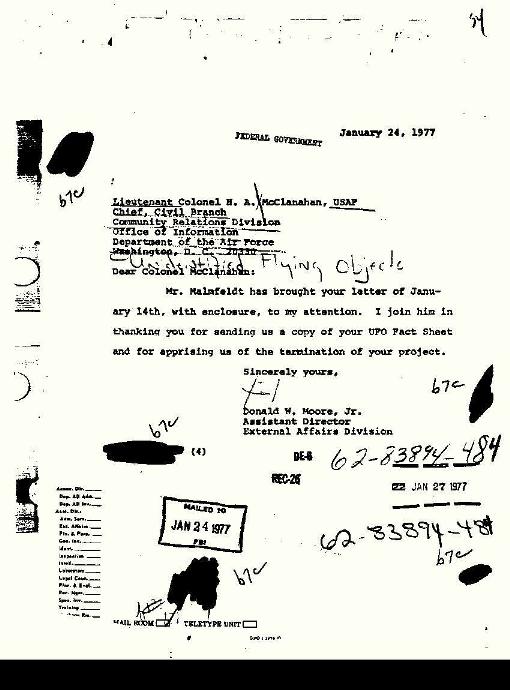
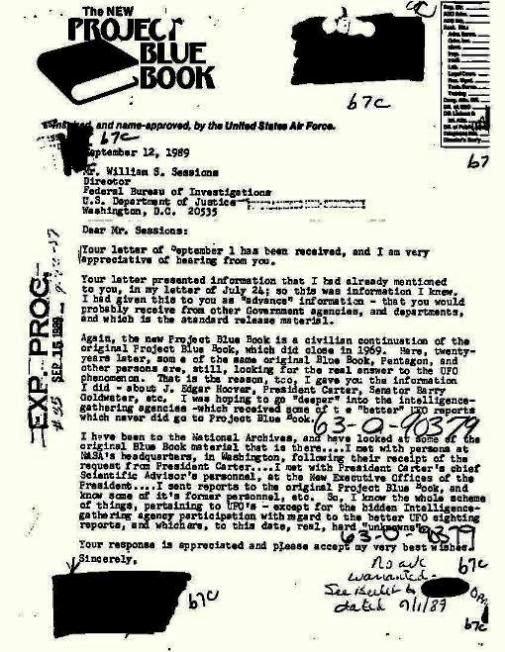
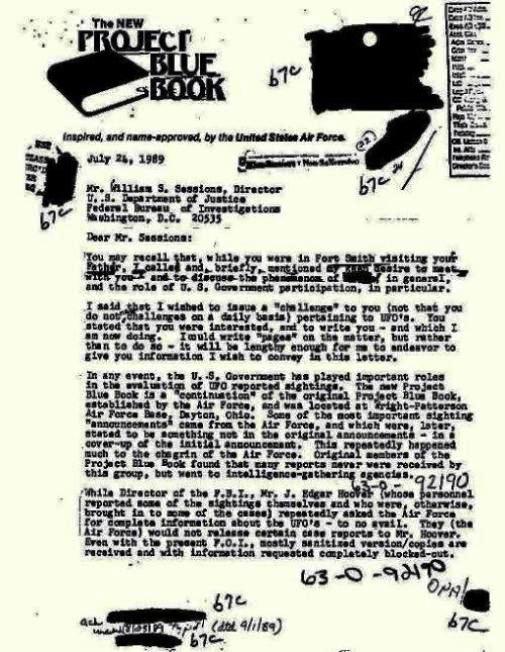
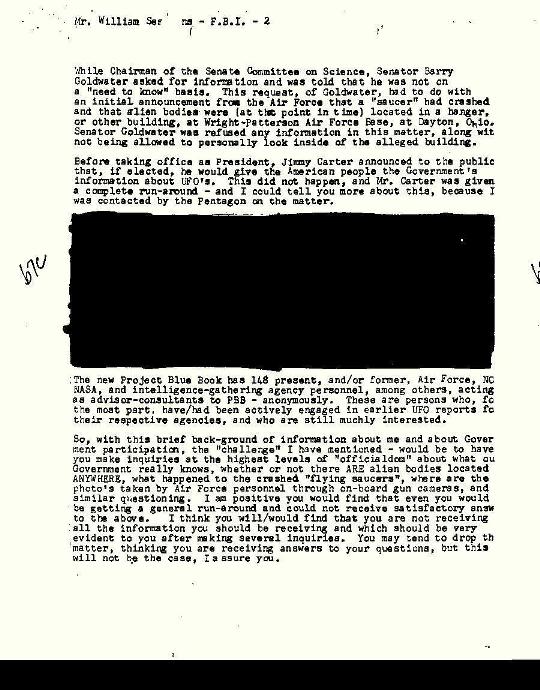
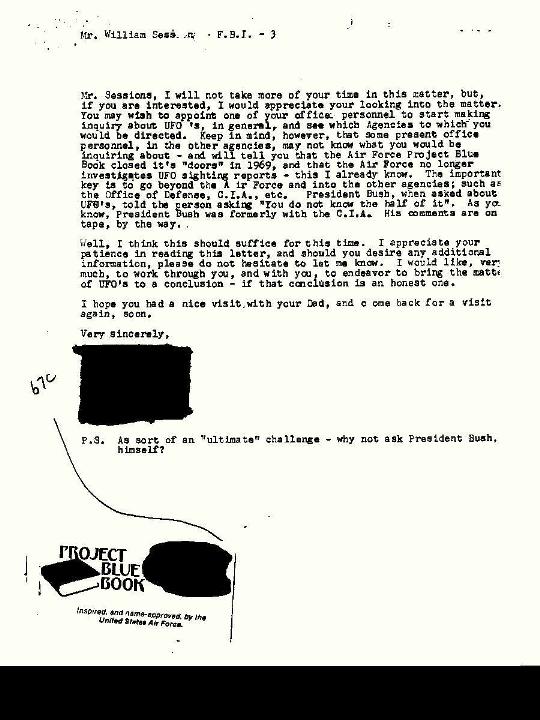
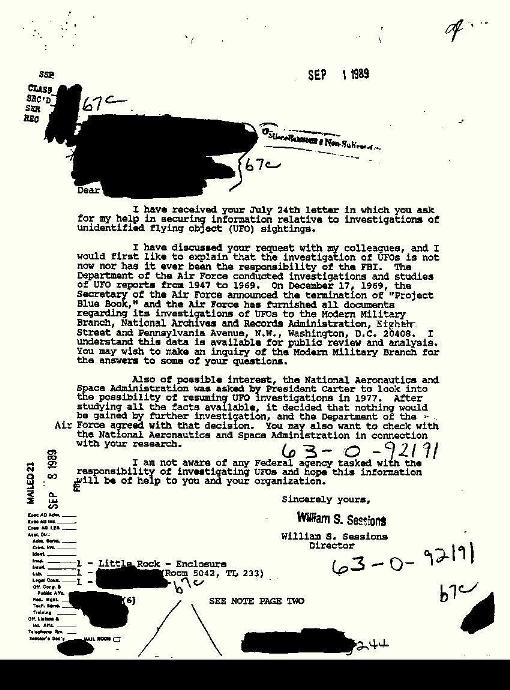
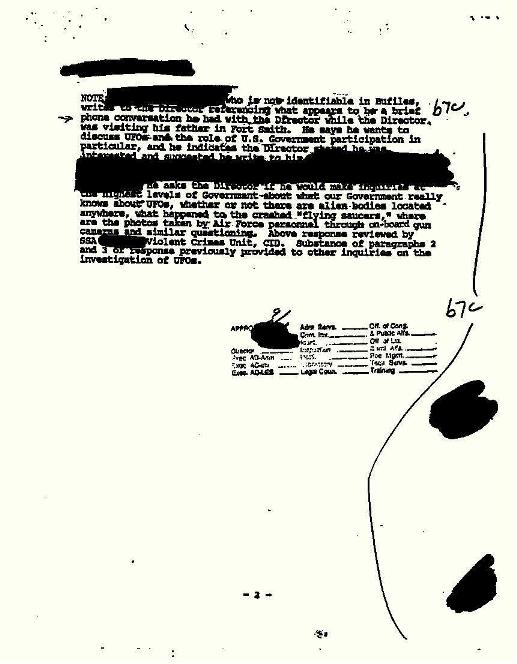
Here is a copy of the United States Air Force's official statement regarding the UFO phenomenon, as noted in (USAF Fact Sheet 95-03)
Area 51 News Opt-In E-zine